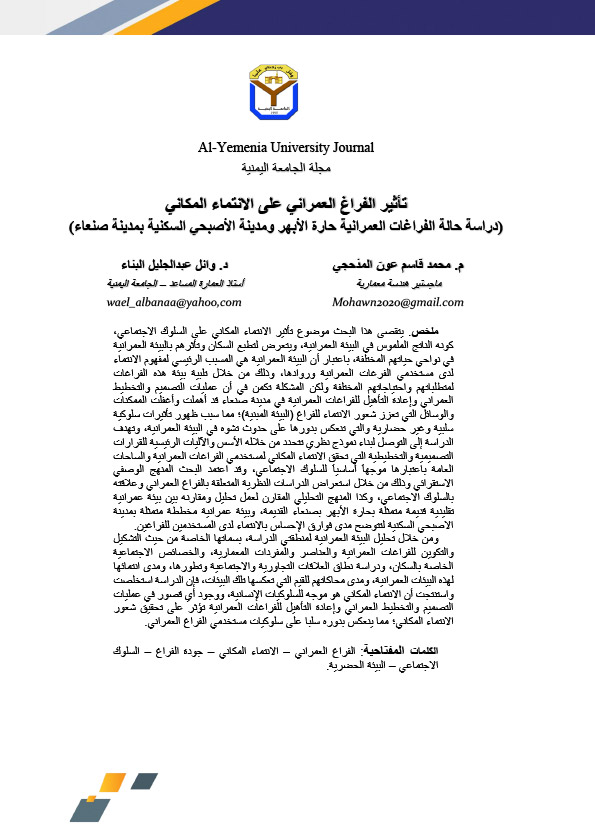The impact of urban space on spatial belonging (case study of urban spaces in Al-Abhar neighborhood and Al-Asbahi residential city in Sana'a)
Keywords:
Urban space, spatial belonging, quality of space, social behavior, urban environmentAbstract
This research investigates the impact of spatial belonging on social behavior, as it is the tangible product of the urban environment, and addresses the habituation of residents and their influence by the urban environment in various aspects of their lives, considering that the urban environment is the main cause of the concept of belonging among users of urban spaces and their visitors, through the environment of these spaces meeting their various requirements and needs. However, the problem lies in the fact that the processes of urban design, planning, and rehabilitation of urban spaces in the city of Sana'a have neglected and overlooked the possibilities and means that enhance the feeling of belonging to the space (built environment); Which caused the emergence of negative and uncivilized behavioral effects, which in turn are reflected in the occurrence of distortion in the urban environment. The study aims to reach a theoretical model through which the main foundations and mechanisms for design and planning decisions are determined, which achieve spatial belonging for users of urban spaces and public squares, as a basic guide to social behavior. The research adopted the descriptive inductive approach by reviewing theoretical studies related to urban space and its relationship to social behavior, as well as the comparative analytical approach to conduct an analysis and comparison between an old traditional urban environment represented by the Al-Abhar neighborhood in Old Sana'a, and a planned urban environment represented by the Al-Asbahi residential city, to clarify the extent of differences in the sense of belonging among users of the two spaces. By analyzing the urban environment of the two study areas, with its special features in terms of the formation and composition of urban spaces, architectural elements and vocabulary, and the social characteristics of the population, and studying the scope of neighborhood and social relations and their development, and the extent of their belonging to these urban environments, and the extent of their emulation of the values reflected by these environments, the study concluded and concluded that spatial belonging is a guide to human behaviors, and the existence of any shortcomings in the processes of urban design, planning, and rehabilitation of urban spaces affects the achievement of a sense of spatial belonging; which in turn is negatively reflected in the behaviors of users of the urban space.



